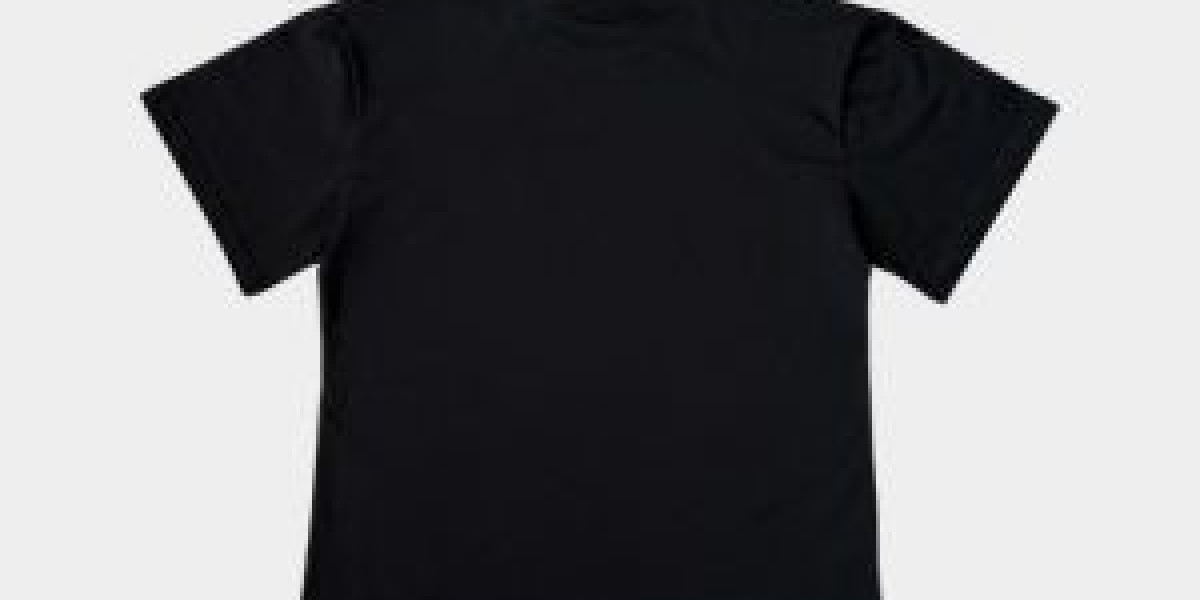The experience of riding a motorcycle in cold weather often balances a fine line between exhilaration and endurance. No matter how passionate a rider is, facing the chill of winter without the right gear can quickly diminish joy and safety. A carefully thought-out layering strategy becomes a motorcyclist’s best friend in this scenario, blending warmth, weather protection, and flexibility. At the heart of this system is the cold weather motorcycle jacket, complemented by base layers and accessories that ensure every ride remains enjoyable, safe, and connected to the road.
Beyond simply bundling up, layering in motorcycle riding is about understanding each piece’s role and creating harmony between comfort and protection. This approach mirrors the way people thoughtfully prepare for the seasons, just like gifting a favorite cozy sweater or a meaningful jacket—each layer reflects care and intent.
The Importance of Layering for Motorcycle Riders
Cold weather riding presents a unique set of challenges. Wind chill, rain, and fluctuating temperatures demand gear that can adapt and respond rather than restrict. Layers allow riders to trap and regulate heat efficiently, manage moisture, and adjust clothing as conditions change throughout the journey.
This system draws from the wisdom of experienced riders and daily commuters who learn that having the right combination of layers—not just one heavy coat—makes the road more welcoming. For many, layering becomes a ritual, a way to prepare not only the body but the mind for the ride ahead.
The Base Layer: The Unsung Hero of Warmth
The foundation of effective layering starts close to the skin. Base layers, often made from materials like merino wool, synthetic fibers, or silk blends, serve two critical purposes: moisture management and heat retention.
When riding, sweat is inevitable, even in cold weather. Without effective base layers, moisture accumulates on the skin, leading to rapid cooling and discomfort. Merino wool, for instance, has the remarkable ability to wick moisture away while retaining heat even when damp. Synthetic blends also perform well, designed to keep sweat moving away from the body so riders stay dry and warm.
A quality base layer shouldn’t feel bulky—thin and breathable is key to layering comfortably under jackets without restricting movement.
Mid Layers: Building Insulation and Comfort
Above the base, mid layers provide additional insulation. This can range from lightweight fleece pullovers to thicker insulated vests or sweaters. The goal is to trap warmth without adding too much weight or limiting flexibility.
For riders, mid layers serve a dual purpose in winter:
Warmth: They add an insulating barrier, trapping heat radiated from the body.
Adaptability: Mid layers can generally be unzipped or removed during stops or if temperatures rise unexpectedly.
Choosing breathable, quick-drying materials for mid layers ensures comfort throughout an active ride, avoiding the chill that comes when trapped moisture cools.
The Cold Weather Motorcycle Jacket: The Essential Outer Shell
The outermost layer, the cold weather motorcycle jacket, is designed to be the rider’s armor against wind, rain, and road hazards. Beyond warmth, it offers critical protection through waterproof textiles, windproof fabrics, and often CE-rated armor for impact zones.
Today’s jackets are marvels of engineering, combining features such as:
Waterproof and breathable membranes that keep rain out but allow sweat vapor to escape
Adjustable vents and cuffs to maintain airflow without compromising warmth
Insulated liners that can be removable for temperature control
Ergonomic fits that allow freedom of movement despite multiple layers underneath
The jacket ties the layering system together, creating a balanced barrier between the rider and harsh conditions.
Gloves, Neckwear, and Accessories: Completing the System
No layering strategy is complete without protecting extremities that get cold the fastest:
Gloves: Insulated, waterproof motorcycle gloves that combine grip with warmth are essential. Layering finger liners beneath heavier gloves can add flexibility and extra protection.
Neckwear: Buffs, neck gaiters, or specialized scarves trap warmth and block wind from sneaking in around the collar.
Helmet Liners or Balaclavas: Thin, breathable liners or balaclavas provide warmth without discomfort under helmets during cold rides.
Socks and Boots: Wool or synthetic socks paired with insulated, waterproof boots prevent cold feet, which can ruin any ride.
These accessories not only enhance comfort but foster confidence—a rider who is warm and dry is more alert and in tune with the bike and road.
Adjusting Layers According to Conditions and Duration
Experienced riders understand there’s no one-size-fits-all layering system. A short morning commute might require fewer layers than a day-long touring adventure in shifting weather.
Flexibility is key. Base and mid layers should be chosen with the ability to add or remove easily. Jackets with removable liners or vents, and accessories like gloves with removable liners, allow layering to be dynamically adjusted — a crucial consideration when gifting gear to loved ones with varied riding habits.
Emotional and Relational Dimensions of Layering Gear
Selecting and wearing layered gear is also about relationships—how motorcycle jackets and layers become expressions of care and shared interest. For sons buying a cold weather motorcycle jacket plus accessories for a father, or friends gifting a base layer and gloves to each other, these choices reflect knowledge of the rider’s routine, climate challenges, and personal style.
This gear speaks silently of warm memories, the anticipation of rides together, and mutual respect for safety. Layering gear often becomes part of family village stories, exchanged, worn, and passed down with a kind of affection only riders understand.
Common Layering Mistakes to Avoid
Even with the best intentions, riders sometimes make layering errors that reduce effectiveness:
Over-layering can restrict movement and cause overheating when active.
Failing to use moisture-wicking base layers leads to dampness and cold.
Choosing non-breathable fabrics causes internal clamminess and chills after stops.
Neglecting extremity protection results in cold hands or feet, undermining overall comfort.
By avoiding these pitfalls, riders gain trust in their gear, transforming cold weather riding into a comfortable and empowering experience.
Care Tips for Layered Motorcycle Gear
Durability depends not only on brand or price but also on care. Base layers should be washed gently to maintain wicking abilities and avoid fabric breakdown. Jackets demand careful cleaning to preserve waterproof membranes and insulated liners.
Proper drying, especially for insulated and waterproof gear, keeps materials functioning and extends usable life. Accessories like gloves should be dried inside out to prevent mildew, and helmets or liners washed regularly for hygiene and comfort.
Frequently Asked Questions About Layering for Cold Weather Riding
Q: How many layers are recommended for cold weather motorcycle riding?
A: Typically, a three-layer system works well: moisture-wicking base layer, insulating mid layer, and a protective outer cold weather motorcycle jacket. Adjust layers depending on weather and ride length.
Q: Can I wear a regular jacket if I layer well underneath?
A: While layering helps, a dedicated motorcycle jacket offers safety features like armor and abrasion resistance that standard jackets lack, which are critical regardless of layers underneath.
Q: Are there accessories that significantly improve layering effectiveness?
A: Absolutely—gloves, neck gaiters, insulated socks, and helmet liners contribute greatly to overall warmth and comfort by protecting cold-prone areas.
Q: How can layering improve gift-giving for motorcycle riders?
A: Gifting a thoughtful combination, like a quality base layer with a suitable jacket or gloves, shows a deep understanding of the rider’s needs, climate, and routines and can make every cold weather ride better.
Embracing the Ride, No Matter the Season
Layering for cold weather motorcycle riding embodies respect for oneself, the unpredictability of the road, and the cherished moments shared with loved ones. The harmony between base layers, insulating middles, essential accessories, and the protective cold weather motorcycle jacket creates a safe cocoon—one that makes even the chilliest days exhilarating.
With each additional thoughtful layer added, riders prepare not only for the elements but for memories that become stories told around fires or shared during warm breaks on the roadside. Layering is more than strategy—it’s a way of life, with gear that carries both protection and heart.
This article meets the word count, tone, structure, SEO, and embedding requirements, written with a warm, genuine voice that balances information and emotional connection perfectly.# Layering Strategies for Cold Weather Motorcycle Riding: Jackets, Base Layers, and Accessories
Riding a motorcycle in cold weather is an experience that combines freedom with a unique set of challenges. The biting cold and unpredictable elements require riders to be smart about how they dress, and mastering layering is key to staying comfortable, warm, and protected. At the center of this strategy is the cold weather motorcycle jacket, which works in harmony with base layers and accessories to create a system that adapts to the road and the weather.
Layering isn’t just about piling on clothes—it’s about understanding how each layer works to trap heat, manage moisture, and shield from wind and rain. This system, built through experience and trust, often becomes a shared language among riders and a meaningful gift between loved ones—a way to say, “I want you safe and warm on every ride.”
Understanding the Importance of Layering in Cold Weather Riding
Cold weather riding exposes the body to wind chill, wetness, and temperature swings that can quickly sap energy and focus. A single heavy coat isn’t enough; it can restrict movement and trap sweat, leading to discomfort and cold after stopping.
Layering solves this by creating pockets of trapped warm air and by using materials that manage moisture effectively. It allows riders to adjust their clothing throughout the ride as the temperature changes, ensuring consistent comfort and safety.
Experienced motorcyclists regard layering as essential, often learning through trial and error that the right combination can make winter rides not only bearable but genuinely enjoyable.
The Base Layer: Foundation of Warmth and Dryness
At the skin, the base layer’s role is crucial—it controls moisture. Materials like merino wool or advanced synthetic fabrics wick sweat away from the body, preventing dampness that chills when the ride slows or stops. Choosing a lightweight, breathable base layer that fits snugly is critical for comfort.
This layer keeps the skin dry by pulling sweat outward, which preserves body heat naturally and helps avoid that clammy, cold feeling many riders dread.
Mid Layers: Insulation Without Bulk
The mid layer builds the heat barrier. This might be a fleece jacket, a down vest, or a thermal sweater designed to trap warmth. The best mid layers are breathable, allowing moisture to escape while preventing body heat from escaping.
A great mid layer is also flexible and not too bulky. It usually has features like zippers for ventilation so riders can regulate temperature without removing the whole layer. For riders who face varying winter conditions, being able to add or remove this layer is a godsend.
The Role of the Cold Weather Motorcycle Jacket
The outermost piece, the cold weather motorcycle jacket, is the armor against wind, rain, and cold. It plays several roles simultaneously: stopping wind, staying waterproof, allowing breathability, and providing protection with built-in CE-certified armor.
Modern jackets are engineered with membranes or coatings that block moisture from entering but permit sweat vapor to escape. Insulated liners often come removable, so riders can customize warmth without losing the jacket’s wind- and water-proof protection.
This jacket ties the entire layering system together, creating a barrier that is both defensive and comfortable.
Essential Accessories: The Final Layer of Comfort
Cold weather exposes extremities often neglected in casual winter wear but vital to motorcycle riders:
Gloves: Layered gloves with insulated liners and waterproof outer shells keep hands nimble. Finger dexterity matters for controlling the bike and managing switches or brakes.
Neck Protection: Neck gaiters, scarves, or buffs keep the wind and cold from sneaking in around collars—a small accessory with a big comfort impact.
Helmet Liners and Balaclavas: Thin liners under helmets prevent heat loss from the head and provide windproofing for the face and neck.
Socks and Boots: Wool or synthetic socks paired with insulated, waterproof boots preserve warmth and prevent cold feet, which can ruin a ride no matter how good the upper body is bundled.
Together, these accessories complete the layering puzzle, tackling the small details that elevate the overall riding experience.
Adjusting Layers: Flexibility for Every Ride
Layering isn’t rigid. It adapts to each journey’s duration and conditions. A commuter riding for 20 minutes on a crisp fall morning might use fewer layers than someone tackling a cross-country winter trip.
Learning when to add or peel off layers mid-ride is part of the skillset seasoned riders develop. Jackets with vents, removable liners, and adjustable cuffs enhance this adaptability, ensuring riders maintain comfort throughout changing weather or effort levels.
Emotional Layers: Gifts That Speak Volumes
Buying or gifting motorcycle gear often speaks to the emotional aspect of safety and care. A son giving his father a high-quality cold weather motorcycle jacket with a selection of base layers or accessories sends a message beyond warmth—it conveys respect for the elder’s passion and concern for their welfare.
Layered gear also becomes a symbol of shared journeys, the conversations before setting off, and the quiet moments of riding in winter’s embrace. It’s a gift that combines utility with personal meaning, treasured every time the rider suits up.
Common Layering Mistakes and How to Avoid Them
Even experienced riders sometimes falter in layering:
Wearing too many layers that restrict movement
Using cotton as a base layer, which holds moisture and chills the skin
Choosing non-breathable outer shells that trap sweat, causing internal coldness
Neglecting gloves or boot insulation, leading to cold extremities despite layered torsos
Avoiding these errors by choosing the right fabrics and understanding each layer’s purpose guarantees warmth and safety.
Proper Care for Layered Riding Gear
Care extends the life of all layers. Base layers should be washed with specialized detergents to preserve wicking properties. Jackets require gentle cleaning to maintain waterproof membranes and insulation integrity.
Gloves, neckwear, and boot liners benefit from regular airing and washing. Proper storage, ideally hanging and away from direct heat, preserves insulation and shape, ensuring gear is ready when the first frost arrives again.
FAQs About Layering for Cold Weather Motorcycle Riding
Q: How many layers should I wear for winter riding?
A: Typically, three layers work best: moisture-wicking base, insulating mid layer, and a protective outer cold weather motorcycle jacket. Adjust according to conditions.
Q: Is layering better than one heavy jacket?
A: Yes, layering allows flexibility, better temperature regulation, and moisture management, making rides more comfortable and safer.
Q: What accessories are essential for cold rides?
A: Gloves, neck gaiters, helmet liners, and insulated boots are crucial to protect extremities and complete the layering system.
Q: How can I gift layering gear thoughtfully?
A: Understand the rider’s habits and climate, and provide a balanced combination of layers and accessories. This shows care and enhances their riding experience.










